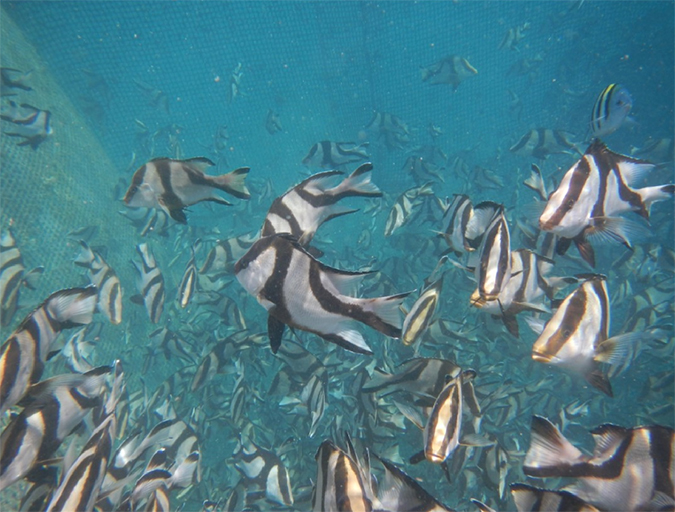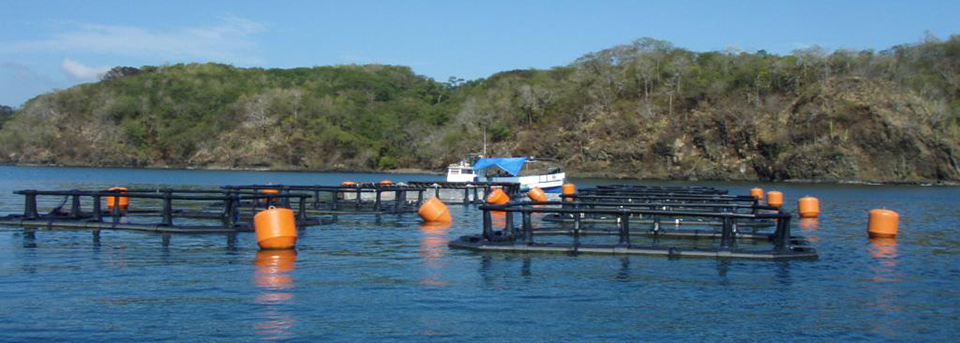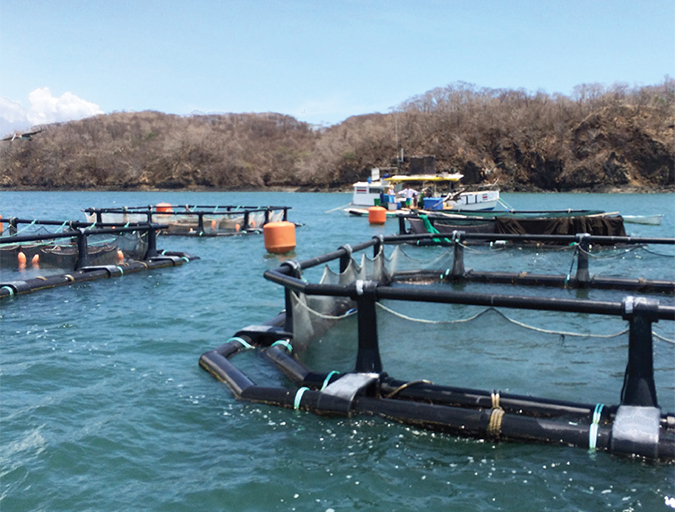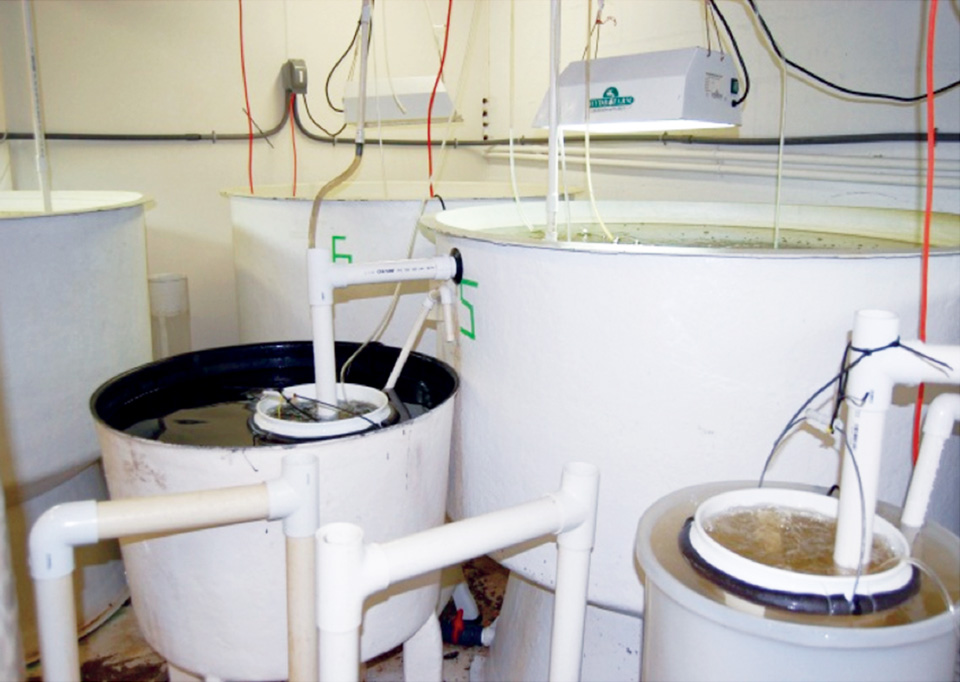Study evaluated survival of larvae-fed rotifers, two microalgae species and enriched artemia

The 103 snapper species of the family Lutjanidae are economically very important, as they support valuable commercial, recreational and subsistence fisheries. About 13 snapper species have been cultured experimentally or at a pilot or commercial scale.
The lane snapper (Lutjanus synagris) supports important fisheries in the Caribbean Sea, but because of intense fishing pressure and declining yields, there is much interest in developing a viable aquaculture package that would support commercial production of the fish.
An important component of such a package is broodstock spawning on demand, with hormonal induction if necessary, as many marine fish cannot be spawned otherwise at this time. A study by the authors induced spawning of lane snappers and reared the larvae to evaluate some of the factors that affect the survival of larvae fed rotifers, two microalgae species and enriched artemia.
Snapper study
Adult lane snappers were captured in areas around Margarita Island in northeastern Venezuela and transported to the aquaculture facilities at the Scientific Research Institute at the University of Oriente. They were held in 145-cubic-meter earthen tanks for several months with snappers of different species and fed daily with sardines and penaeid shrimp. Sex and maturity were assessed using standard techniques, and sexually mature fish were induced to spawn using hormone injections.
After hormonal treatment, these nine fish were placed in 1.5-cubic-meter tanks with one female and two males per tank. The continuously aerated tanks contained filtered seawater with 37 ppt salinity and temperature of 29 ± 2 degrees-C. The tank effluent pipes were covered with 400-µm netting to prevent egg losses. After fish spawned, the eggs were collected manually using a hand net and stocked into 10-L aquariums with filtered seawater from the same source as the water in the broodstock tanks.
The rotifer Brachionus ruditiforme was mass cultured in 1-cubic-meter tanks and fed with Saccharomyces cereviceae yeast. Isochrysis galbana and Chaetoceros ceratosporum microalgae were cultured in 18-L glass bottles and translucent 40-L plastic bags, which were harvested when density reached 3 million cells/mL.
Feed treatments
Newly hatched lane snapper larvae were stocked at 32 larvae/L into six, 400-L tanks with filtered seawater, which was replaced at 50 percent/day. About 15 percent of the tank bottom water was removed daily. The larvae were fed 12 days. Three tanks received rotifers at 7 ± 2 rotifers/mL and I. galbana at 200,000 cells/mL. Another three tanks received rotifers at 7 ± 2 rotifers/mL and C. ceratosporum at 200,000 cell/mL.
On day 12, the larvae fed rotifers and I. galbana were divided into two groups and stocked into six, 400-L tanks with filtered seawater and aeration. In three of these tanks, the larvae were fed artemia nauplii and nauplii enriched with a formula rich in highly unsaturated fatty acids (HUFAs). Larvae in the other three tanks were fed artemia enriched with a mixture of commercial fish oil and egg yolk.
Larval mortalities were recorded daily in every tank, along with water temperature and salinity. Every three days, larval growth was assessed by measuring five larvae using a stereoscopic microscopic.
Results

Broodstock lane snappers spawned about 30 hours after hormonal induction and produced pelagic, spherical and transparent eggs. The eggs were 80 percent fertile, and 82 percent hatched 24 hours after spawning at 37 ppt water salinity and a temperature of 29 ± 2 degrees-C.
The highest larval survival (10.25 ± 1.25 percent) was recorded in tanks that received rotifers and the microalga I. galbana. Larval survival was possibly affected by the unsaturated fatty acids in I. galbana and their known positive effects in the nutritional requirements of larval fish and crustaceans.
Larvae fed rotifers and the microalga C. cerastoporum died by 100 hours after hatching. During the first 90 hours after hatching, larval growth was not significantly different (P ≤ 0.05) among the larvae fed rotifers and C. cerastoporum (Table 1). However, there was a notable difference in the growth of the three groups of larvae fed on rotifers and I. galbana.
After 20 days of culture, the highest survival, 42 percent, was obtained in tanks with larvae fed the HUFA-enriched artemia, while the survival of larvae fed the mixture with fish oil and yolk egg was 20 percent. Growth rates between the two treatments showed significant differences, with larvae fed the HUFA-enriched artemia significantly longer (P ≤ 0.05, Table 2).
Salazar, Average growth of lane snapper larvae, Table 1
| Hours | Isochrysis galbana Total Length (mm) | Chaetoceros cerastosporum Total Length (mm) |
|---|---|---|
| 24 | 2.34 ± 1.04 | 2.36 ± 1.05 |
| 72 | 2.35 ± 1.50 | 2.40 ± 1.94 |
| 144 | 2.53 ± 1.05 | 2.55 ± 1.31 |
| 216 | 2.81 ± 1.05 | No data |
| 288 | 3.24 ± 1.01 | No data |
Salazar, Average growth of lane snapper larvae, Table 2
| Days | Artemia + HUFAs Total Length (mm) | Artemia + Fish Oil, Egg Yolk Total Length (mm) |
|---|---|---|
| 12 | 6.42 ± 2.75 | 5.71 ± 1.95 |
| 15 | 9.21 ± 2.13 | 6.68 ± 1.26 |
| 18 | 9.78 ± 2.58 | 9.91 ± 1.36 |
| 22 | 12.30 ± 4.35 | 8.45 ± 1.36 |
Perspectives
The results of the study are part of the development of snapper-rearing procedures at the first commercial hatchery for marine fish production in Venezuela, part of an ongoing project to commercially culture lane and other snappers in the country. Additional research is needed to further refine the spawning and larval-rearing techniques, but results to date are encouraging.
(Editor’s Note: This article was originally published in the March/April 2010 print edition of the Global Aquaculture Advocate.)
Now that you've reached the end of the article ...
… please consider supporting GSA’s mission to advance responsible seafood practices through education, advocacy and third-party assurances. The Advocate aims to document the evolution of responsible seafood practices and share the expansive knowledge of our vast network of contributors.
By becoming a Global Seafood Alliance member, you’re ensuring that all of the pre-competitive work we do through member benefits, resources and events can continue. Individual membership costs just $50 a year.
Not a GSA member? Join us.
Authors
-
J. Salazar
Escuela de Ciencias Aplicadas del Mar
Universidad de Oriente
Isla de Margarita, Venezuela -
A. Velásquez
Escuela de Ciencias Aplicadas del Mar
Universidad de Oriente
Isla de Margarita, Venezuela -
J. Rosas
Escuela de Ciencias Aplicadas del Mar
Universidad de Oriente
Isla de Margarita, Venezuela[101,118,46,117,100,101,46,111,100,117,46,101,110,64,115,97,115,111,114]
-
T. Cabrera, Ph.D
Instituto de Investigaciones Científicas
Universidad de Oriente -
J. Millán
Instituto de Investigaciones Científicas
Universidad de Oriente
Tagged With
Related Posts

Responsibility
Assessing culture potential of red emperor snapper in New Caledonia
The red emperor snapper, known as “pouatte” in New Caledonia, is valuable throughout its broad geographic range and a highly valued food fish locally. Declining wild catches and market demand have provided the incentive to carry out technical feasibility studies to determine its commercial aquaculture potential.

Health & Welfare
Integrated spotted red snapper aquaculture in Central America
The technology for closing the life cycle of spotted red snappers has progressed due to efforts of government and private-sector researchers.

Aquafeeds
Soy protein concentrate replaces fishmeal in spotted rose snapper diets
A feeding demonstration in Costa Rica evaluated the partial replacement of fishmeal in diets for spotted rose snappers with soy protein concentrate (SPC). It found no significant difference between the performance of fish fed an SPC-based diet and those that received commercial fishmeal-based diets.

Health & Welfare
Advances in intensive copepod production technology
Research at the Oceanic Institute has been successful in overcoming bottlenecks associated with rearing small-mouthed fish larvae by finding a suitable first feed. Early work on the calanoid copepod Parvocalanus crassirostris focused on parameters necessary for successful maintenance of stock cultures.



